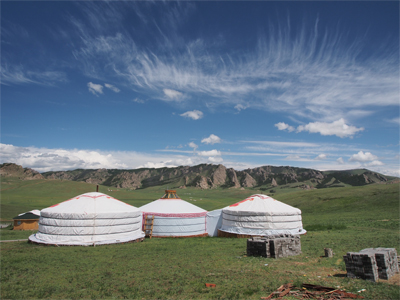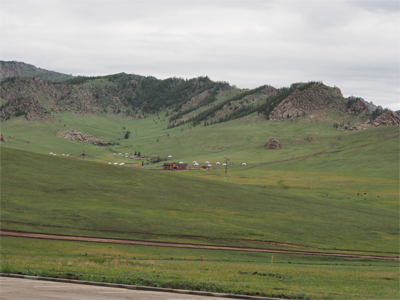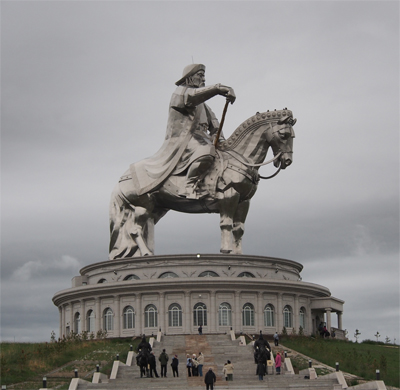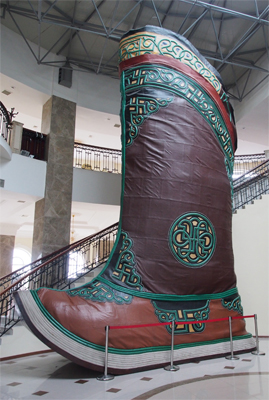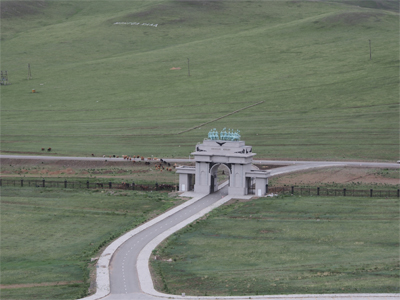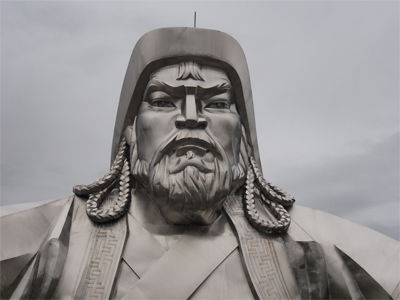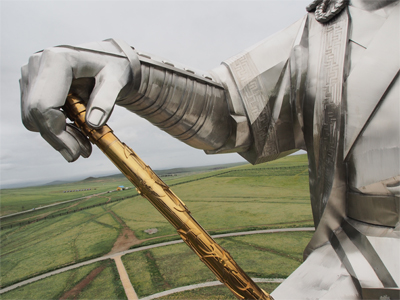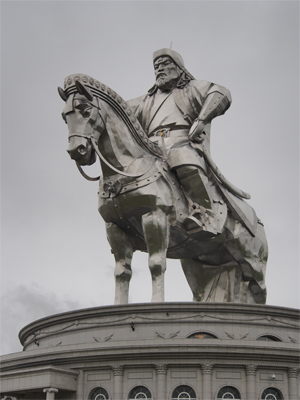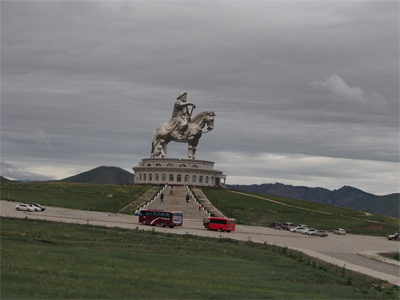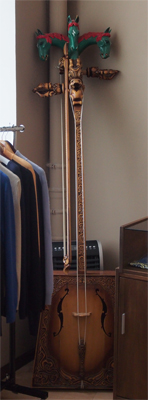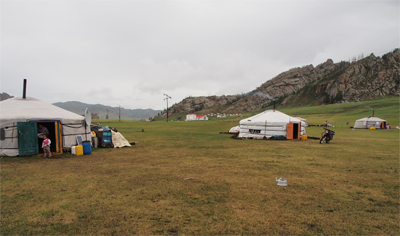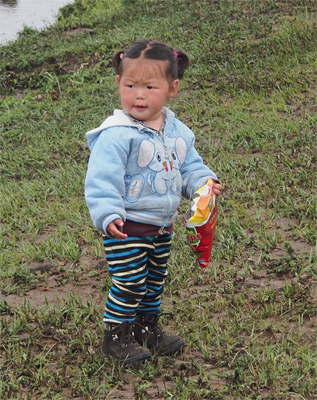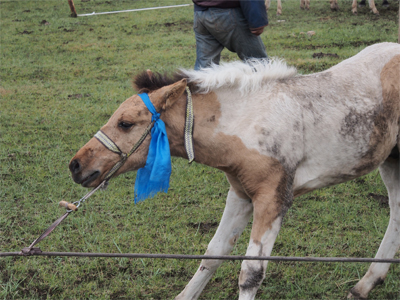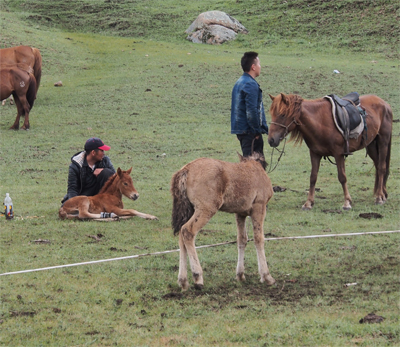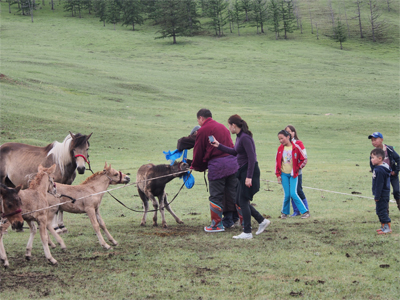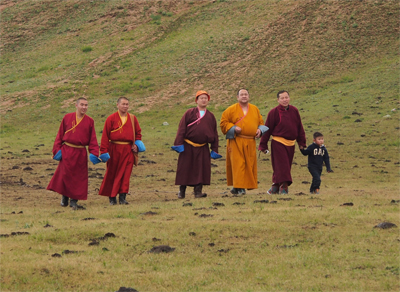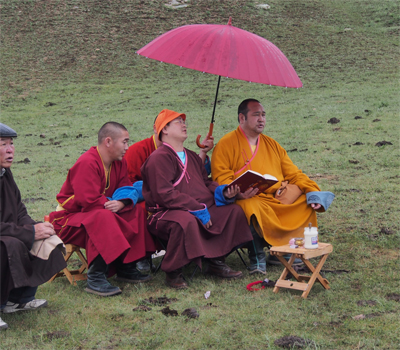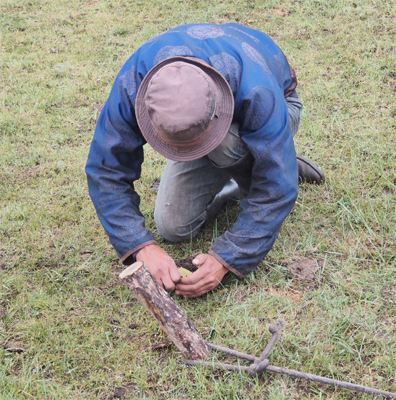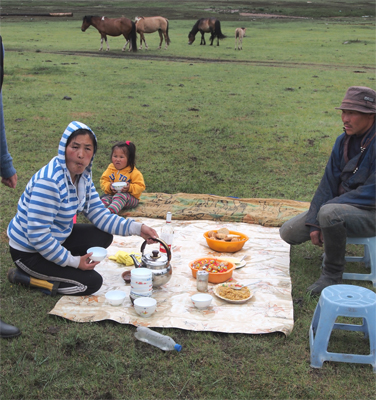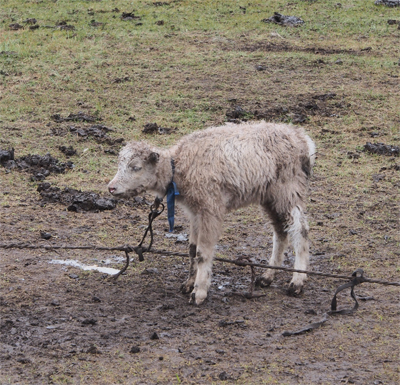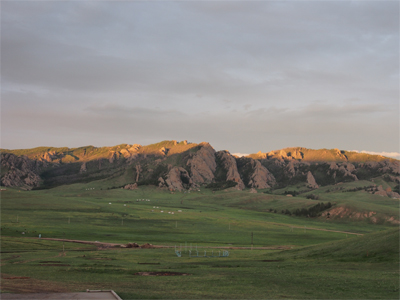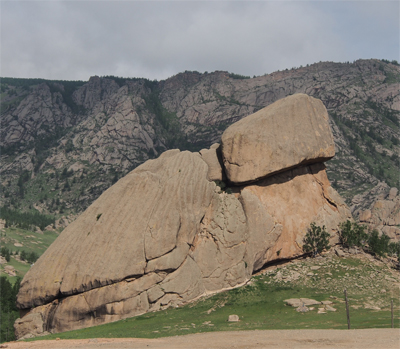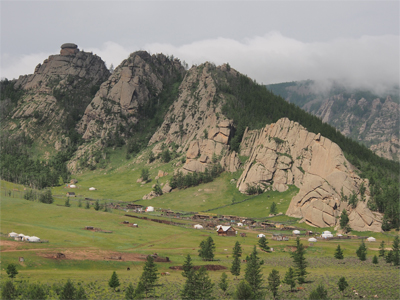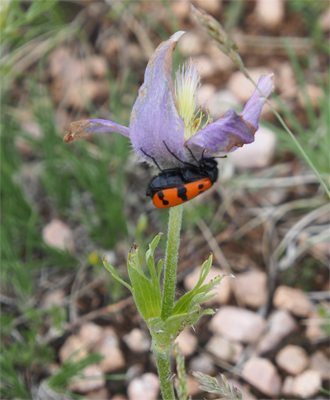Tues., 6/25/13 - Gorkhi-Terelj National Park - Guru Eco Camp
This looks like it is a beautiful area to just wander around. The Gorkhi-Terelj Nat'l Park is a natural reserve in a deep valley (hence the flooding) between forested hillsides, granite boulders, and mountain streams.
Genghis Khan is greatly honored by the Mongolian people. Even though he killed about 40 million people, he reunited all the Mongol tribes and conquered the regions from China to Russia and from Kazakhstan to Korea. His Mongol Empire became the largest empire (territory) in history.
A private foundation has set about erecting a stainless steel statue of GK sitting on his horse in full armor. It is the largest horse statue in the world, until Crazy Horse is finished. It is 40 meters (131 ft.) tall and was opened in 2008. It was erected on this site because at age 17 GK won his first battle here and found a golden whip at this place. The whip is part of the statue. When the complex is finished in 2015, the grounds surrounding the statue will be landscaped. Later the plan is to add 10,000 statues of mounted horseman to the west. For $100,000 you can have your face on a statue to the front of the Cavalry and for $10,000 at the rear.
The statue sits atop a two-story building. In the lobby is a Mongolian boot nine meters high - naturally it is the largest in the world. It is made from panels of cowhide. In the basement are two museums of Mongol and Xiongnu empire (209 BC to 93 AD) artifacts.
We walked up the inside of the statue and out onto the top of the horse’s head for a magnificent view of the surroundings with groups of gers and herdsmen with horses, etc.
Gers at our camp and more beautiful clouds
|
View from our doorstep |
Statue of Genghis Khan
|
Boot - almost 30 ft. high |
Throughout Asia, in particular, you see the swastika symbol. Contrary to its use by Hitler and Nazi Germany, it is a symbol with many positive meanings.
|
Swastika decoration
|
Entry to the memorial
|
Genghis up close and personal from the viewing area atop his horse's head |
Closeup of the golden whip |
His left side
|
Entry with a herd of horses passing by |
Perspective!
|
Morin Khuur or horse head fiddle - traditional Mongolian stringed instrument
|
After lunch back at the camp we went to the home of a Nomad horse herding family. We sat in the ger of one of the two families that raise and train 50 to 60 racehorses for wealthy Mongolian businessmen. The families also have about 100 yaks.
|
Camp of the horse herders |
Daughter
|
Cookies, dairy product, and ?
|
Capturing the colts |
The blue sash means he was the year's firstborn foal
|
They are not happy to be tied up for the first time |
Foal on the ground has a splint on its right hind leg
|
Putting the blue sash on the firstborn foal belonging to the second family - everyone is interested except the foal |
Buddhist monks arriving for the ceremony |
Monks chanting the blessing
|
Blessing by sprinkling mare's milk |
Incense blessing
|
More milk tea, cookies, etc.
|
Milking the mare who is the mother of the firstborn foal |
Yaks at the horse herder's farm |
Baby yak
|
Wed., 6/26/13 - Gorkhi-Terelj National Park - Guru Eco Camp - Mongolia's Election Day
|
|
Sunrise |
Yaks grazing outside our camp |
Turtle Rock
|
Scenery in Gorkhi-Terelj National Park |
Interesting way to install electric poles - at least the pole won't rot
|
This is an ovoo - a pile of stones where you wish for good luck and good health |
Bug on a flower
|
|
